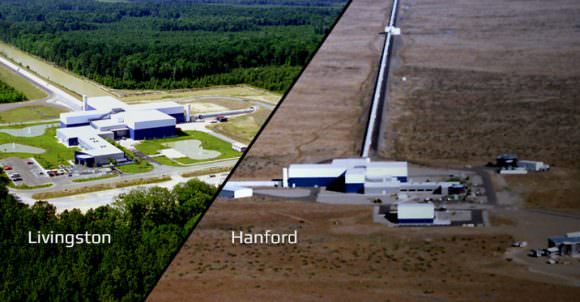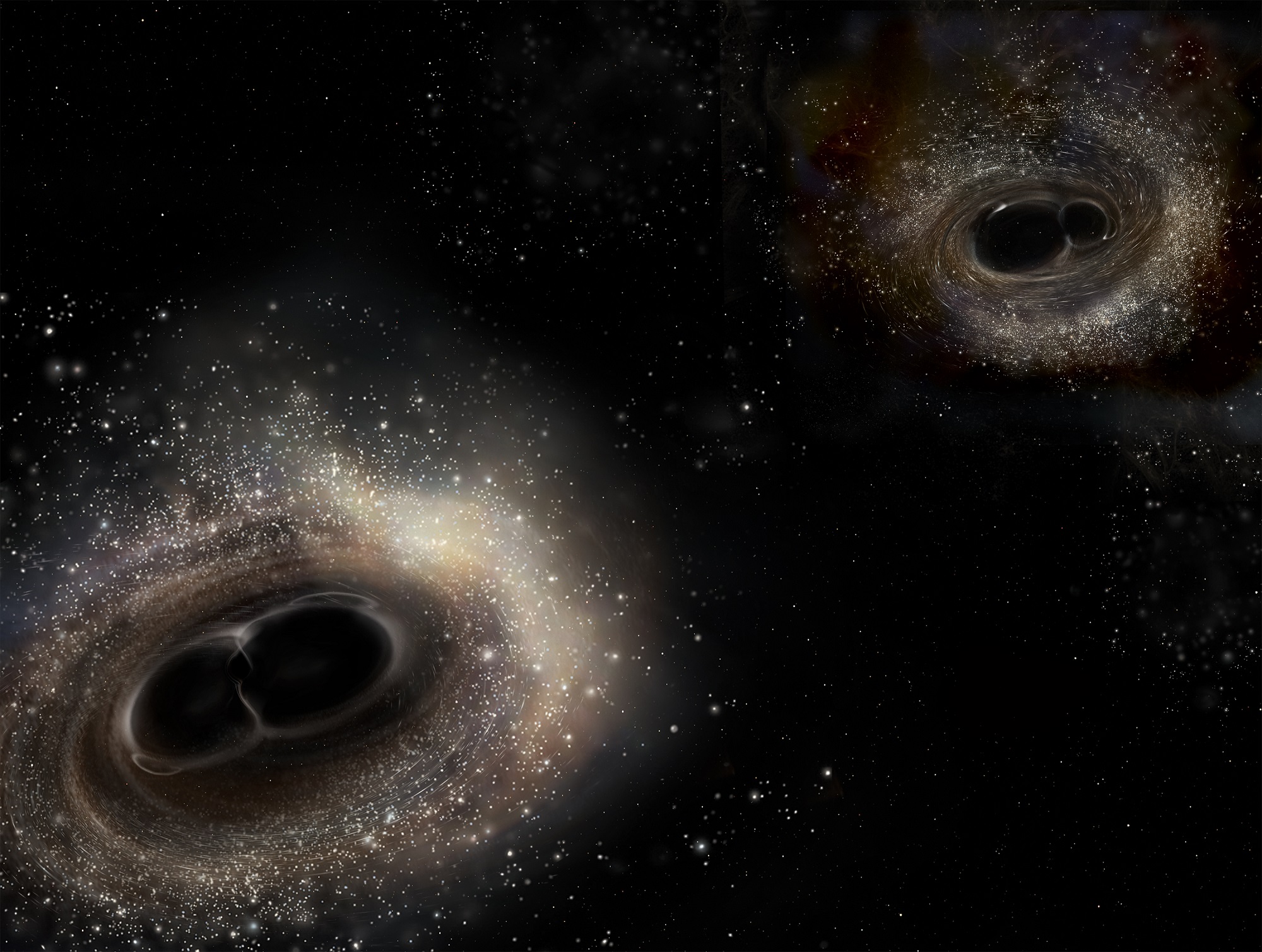On February 11th, 2016, scientists at the Laser Interferometer Gravitational-wave Observatory (LIGO) announced the first detection of gravitational waves. This development, which confirmed a prediction made by Einstein’s Theory of General Relativity a century prior, opened new avenues of research for cosmologists and astrophysicists. It was also a watershed for researchers at Monash University, who played an important role in the discovery.
And now, a little over a year later, a team of researchers from the Monash Center for Astrophysics has announced another potential revelation. Based on their ongoing studies of gravitational waves, the team recently proposed a theoretical concept known as ‘orphan memory’. If true, this concept could revolutionize the way we think about gravitational waves and spacetime.
Researchers from Monash Center for Astrophysics are part of what is known as the LIGO Scientific Collaboration (LSC) – a group of scientists dedicated to developing the hardware and software needed to study gravitational waves. In addition to creating a system for vetting detections, the team played a key role in data analysis – observing and interpreting the data that was gathered – and were also instrumental in the design of the LIGO mirrors.
Looking beyond what LIGO and other experiments (like the Virgo Interferometer) observed, the research team sought to address how these detectors capabilities could be extended further by finding the “memory” of gravitational waves. The study that describes this theory was recently published in the Physical Review Letters under the title “Detecting Gravitational Wave Memory without Parent Signals“.
According to their new theory, spacetime does not return to its normal state after a cataclysmic event generates gravitational waves that cause it to stretch out. Instead, it remains stretched, which they refer to as “orphan memory” – the word “orphan” alluding to the fact the “parent wave” is not directly detectable. While this effect has yet to be observed, it could open up some very interesting opportunities for gravitational wave research.
At present, detectors like LIGO and Virgo are only able to discern the presence of gravitational waves at certain frequencies. As such, researchers are only able to study waves generated by specific types of events and trace them back to their source. As Lucy McNeill, a researchers from the Monash Center for Astrophysics and the lead author on the paper, said in a recent University press statement:
“If there are exotic sources of gravitational waves out there, for example, from micro black holes, LIGO would not hear them because they are too high-frequency. But this study shows LIGO can be used to probe the universe for gravitational waves that were once thought to be invisible to it.”

As they indicate in their study, high-frequency gravitational-wave bursts (i.e. ones that are in or below the kilohertz range) would produce orphan memory that the LIGO and Virgo detectors would be able to pick up. This would not only increase the bandwidth of these detectors exponentially, but open up the possibility of finding evidence of gravity wave bursts in previous searches that went unnoticed.
Dr Eric Thrane, a lecturer at the Monash School of Physics and Astronomy and another a member of the LSC team, was also one of the co-authors of the new study. As he stated, “These waves could open the way for studying physics currently inaccessible to our technology.”
But as they admit in their study, such sources might not even exist and more research is needed to confirm that “orphan memory” is in fact real. Nevertheless, they maintain that searching for high-frequency sources is a useful way to probe for new physics, and it just might reveal things we weren’t expecting to find.
“A dedicated gravitational-wave memory search is desirable. It will have enhanced sensitivity compared to current burst searches,” they state. “Further, a dedicated search can be used to determine whether a detection candidate is consistent with a memory burst by checking to see if the residuals (following signal subtraction) are consistent with Gaussian noise.”
Alas, such searches may have to wait upon the proposed successors to the Advanced LIGO experiment. These include the Einstein Telescope and Cosmic Explorer, two proposed third-generation gravitational wave detectors. Depending on what future surveys find, we may discover that spacetime not only stretches from the creation of gravitational waves, but also bears the “stretch marks” to prove it!
Further Reading: Physical Review Letters


If Space/Time is permanently distorted and assuming that this distortion has happened in all parts of the universe many times over; does this affect the the measurement of distance/time as the light we use as a standard unit will be affected as it passes through distorted space/time
I refer to an expert.
http://data.whicdn.com/images/108251491/original.gif
I would argue that they don’t, simply because if the headline is a question the answer is always no.
Matt Williams, do you know that Einstein’s relativity theory has already been disproved both logically and experimentally (see “Challenge to the special theory of relativity”, March 1, 2016 and a press release on Eurekalert website: https://www.eurekalert.org/pub_releases/2016-03/ngpi-tst030116.php)?
The most obvious and indisputable experimental evidence, which everybody with basic knowledge of special relativity should immediately understand: is the existence of the absolute time shown by the universally synchronized clocks on the GPS satellites which move at high velocities relative to each other while special relativity claims that time is relative (i.e. the time on each reference frame is different) and can never be synchronized on clocks moving with relative velocities.
Many physicists claim that clocks on the GPS satellites are corrected according to both special relativity and general relativity. This is not true. The corrections of the atomic clocks on the GPS satellites are nothing to do with relativistic effects because the corrections are absolute changes of the clocks, none of which is relative as claimed by special relativity. After all corrections, the clocks are synchronized not only relative to the ground clocks but also relative to each other.
Some people may argue that the clocks are only synchronized in the earth centered inertial reference frame, and are not synchronized in the reference frames of the GPS satellites. If it were true, then the time difference between a clock on a GPS satellite and a clock on the ground observed in the satellite reference frame would grow while the same clocks observed on the earth centered reference frame were keeping synchronized. If you corrected the clock on the satellite when the difference became significant, the correction would break the synchronization of the clocks observed in the earth centered frame. That is, there is no way to make a correction without breaking the synchronization of the clocks observed in the earth centered frame. Therefore, it is wrong to think that the clocks are not synchronized in the satellite frame. Actually, on the paper mentioned above, I have proved that if clocks are synchronized in one inertial reference frame, then they are synchronized in all inertial reference frames because clock time is absolute and universal.
Similarly, all the differences of the clocks in Hefele-Keating experiment were also absolute (i.e., they were the same no matter whether you observe them on the moon or on the space station). Therefore, they are nothing to do with relative velocity caused time dilation as claimed by special relativity. It is simply a wrong interpretation that the differences of the displayed times of the clocks are the results of relativity.
The increase of the life of a muon in a circular accelerator or going through the atmosphere is also an absolute change which is the same observed in all reference frames.
The simplest thought experiment to disprove special relativity is the symmetric twin paradox: two twins made separate space travels in the same velocity and acceleration relative to the earth all the time during their entire trips but in opposite directions. According to special relativity, each twin should find the other twin’s clock ticking more slowly than his own clock during the entire trip because of the relative velocity between them as we know that acceleration did not have any effect on kinematic time dilation in special relativity. But when they came back to the earth, they found their clocks had exact the same time because of symmetry. This is a contradiction that has disproved special relativity. This thought experiment demonstrates that relativistic time is not our physical time and can never be materialized on physical clocks.
That is, time is absolute and space is 3D Euclidean. There is nothing called spacetime continuum in nature. Therefore, there are no spacetime ripples in nature.
We already covered this, and Einstein’s theory was further proven by the discovery of gravitational waves. In addition, you already cited this paper as the only proof that relativity has been disproven, which was entirely speculative and not definitive at all. Please do not attempt to spread misinformation, and do not simply repeat yourself.
Everything in that long-winded rant is completely wrong, and you have provided NO evidence for any of it. Just baseless assertions and outright falsehoods.
What you’re saying about the clocks on the GPS satellites simply isn’t true.
And the twins “paradox” was resolved long ago. It’s because the situation is not really symmetric; to get to Alpha Centauri and back one twin has to reverse direction. That is, he has to be subject to acceleration at some point in order to be able to come back. The twin back on Earth experiences no acceleration, so the situation isn’t really symmetric. That is the resolution to the so-called paradox, it’s been understood for literally over a century, and it most certainly does not “disprove” relativity. Look it up. It’s on Wikipedia, so please educate yourself.
I thought this was a pretty epic article, and epic theory. “Orphan memory” sounds entirely plausible to me.
On a much simpler scale, I’ve seen this when applying vinyl decals. If you stretch the decal too much during application, it becomes permanently warped, and can never return to its original state. It sounds reasonable to me that on exponentially larger scales, we could see this fabric of space-time behave in the same manner.